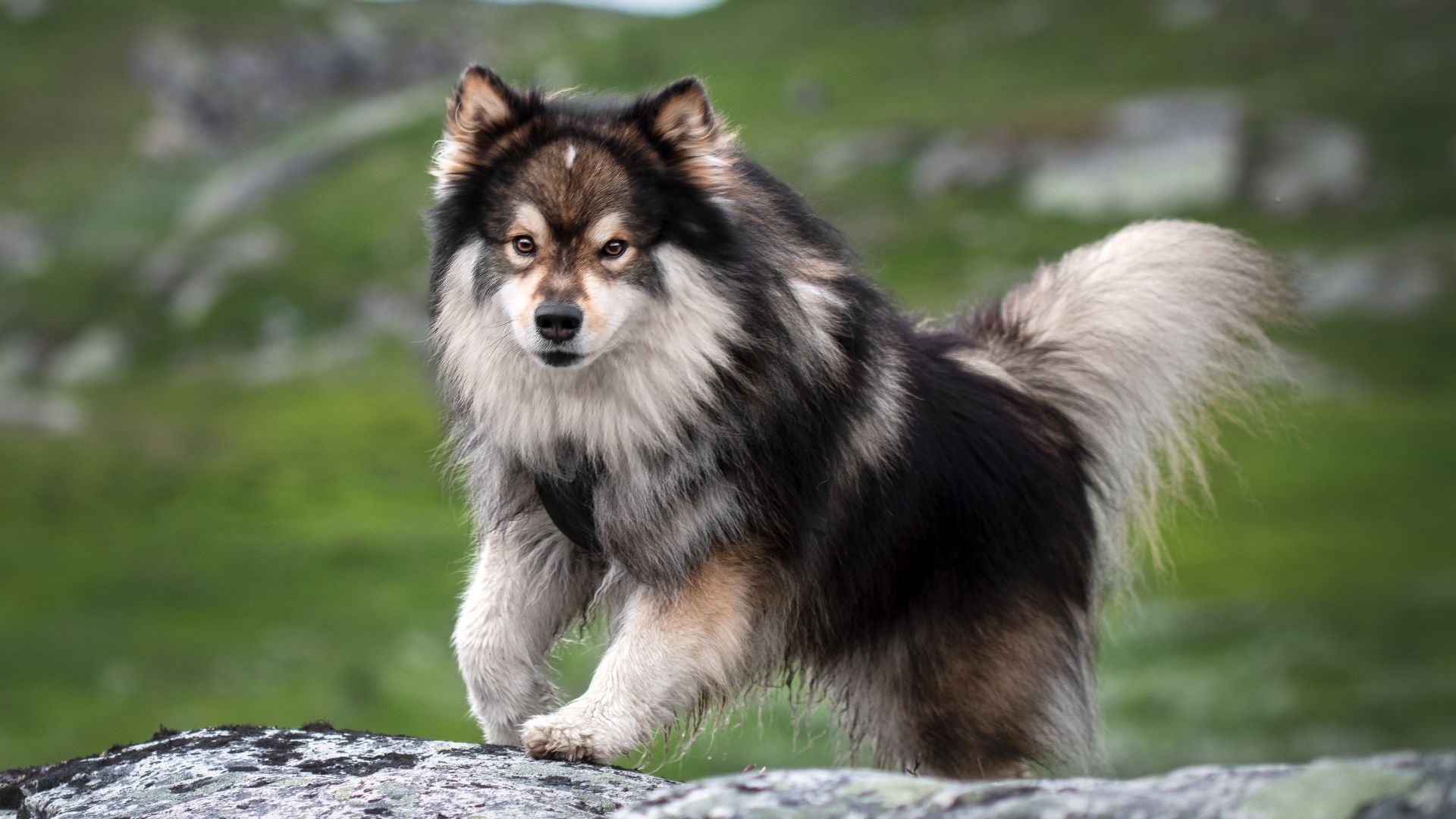If dogs had passports, the ones from the Nordic countries would be stamped with snowflakes, fjords, and cozy log cabins. Hailing from places where winters last half the year and the sun forgets to rise on time, these pups are built to handle cold weather like pros—and look good doing it. Think thick fur, strong paws, and a serious work ethic that would put most humans to shame.
In countries like Norway, Sweden, Finland, Iceland, and Denmark, dogs aren’t just pets—they’re teammates, protectors, and family members. Many of them were bred to pull sleds, herd reindeer, or guard homes in the harshest conditions.
Originally bred for tasks like herding livestock and tracking game, Scandinavian dog breeds are known for their grit and resilience. Whether you’re into majestic spitzes or wolf-like watchdogs, the Nordic breeds bring both beauty and brains to the table.
So bundle up, because we’re heading north to meet the popular breeds recognised by the Nordic Kennel Union, who don’t just survive the cold—they thrive in it.
Dog Breeds Common In Nordic Countries
1. Finnish Lapphund
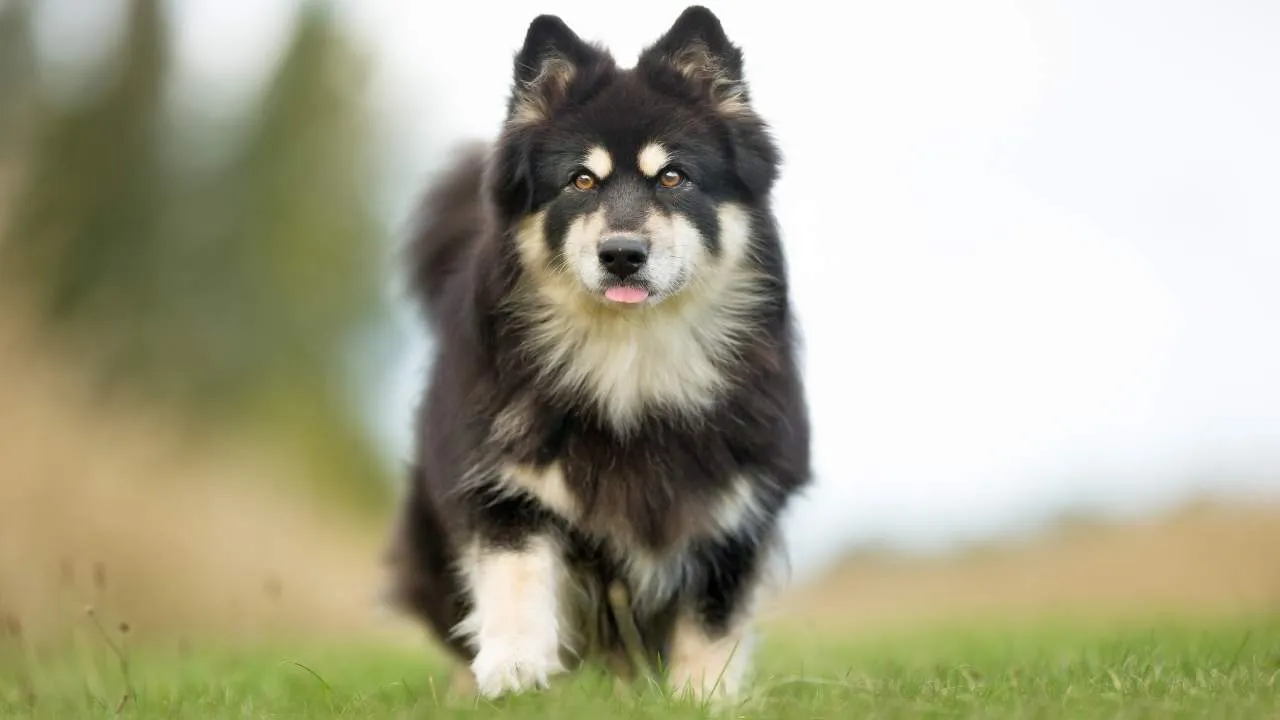
If you’ve ever wondered what kind of dog the Sami people trusted to guard their prized reindeer, meet the Finnish Lapphund — arguably Finland’s canine celebrity and definitely one of the most popular Nordic breeds in the U.S.
Originally bred to herd reindeer across the frosty tundras, the Finnish Lapphund has recently made a graceful transition from working dog to beloved family companion. Think of it as the dog world’s version of going from a rugged explorer to a cozy couch buddy — all while keeping that signature fluffy charm.
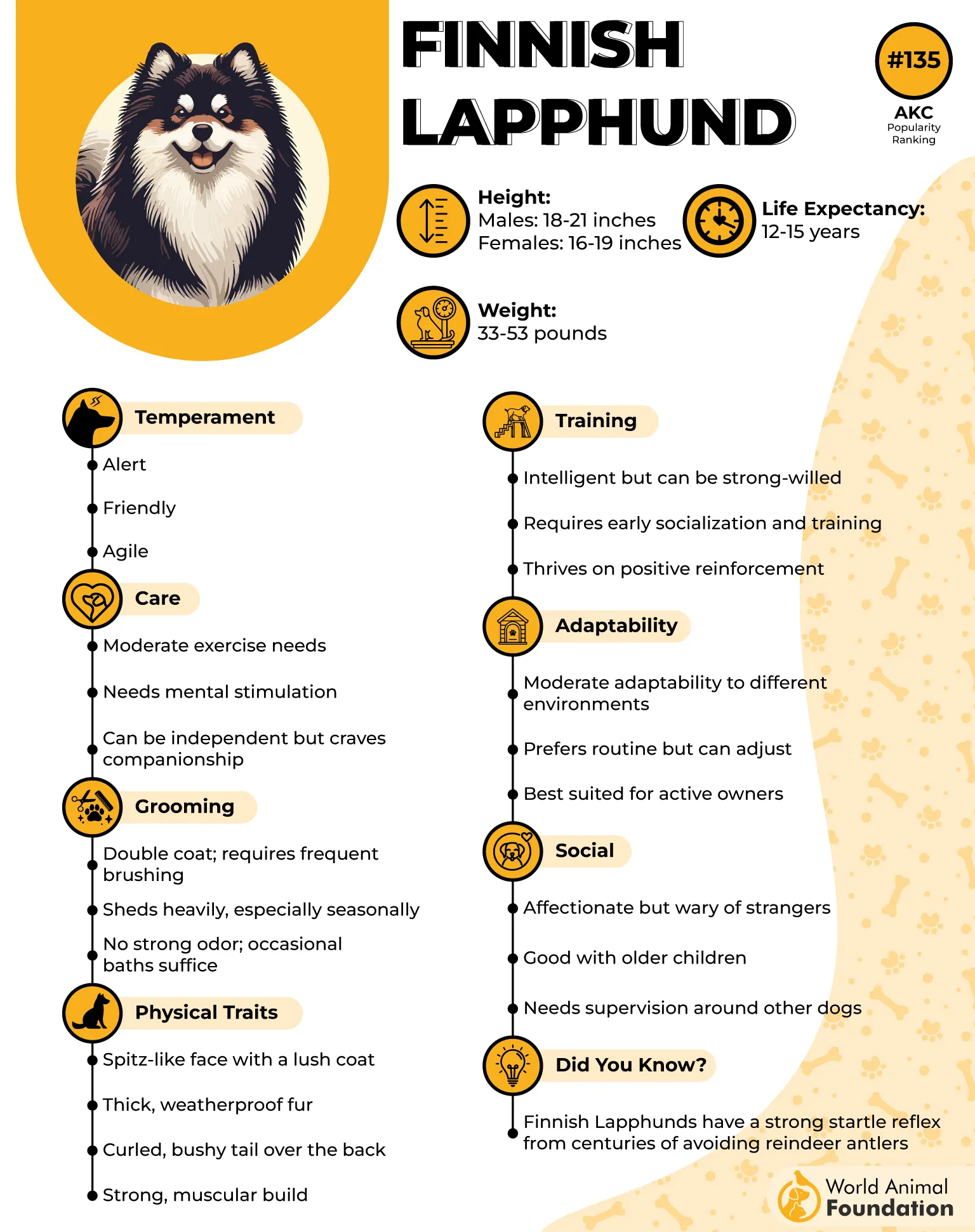
This medium-sized Spitz mix is basically the chill herder of the Arctic Circle: calm, smart, and always ready to work or cuddle, sometimes both at the same time.
With a thick double coat, pricked ears, and a plush tail that curls over the back, they display classic spitz features. Their square build and agile gait make them well-suited for quick bursts of speed, ideal for herding reindeer, their original job.
At home, Finnish Lapphunds are calm, affectionate, and deeply loyal to their families. While not as vocal as some other spitz breeds, they do have a natural instinct to alert their humans to anything new or unusual.
If you want a dog that’s got heritage, smarts, and a sweet personality that fits just about any family lifestyle, the Finnish Lapphund is a total win. Plus, they’re so fluffy, you’ll want to hug them even if you don’t live near reindeer.
2. Norwegian Elkhound

The Norwegian Elkhound doesn’t just come with a cool name — it carries centuries of Viking spirit. This breed is arguably Norway’s most famous dog, and legends say it even roams the pages of Norse mythology. Their name? It’s a nod to the giant game animals they once hunted: mighty elk.
Norwegian Elkhounds are a sturdy, medium-sized breed with a well-balanced build. Males typically stand around 20.5 inches tall at the withers and weigh about 55 pounds, while females are slightly smaller, averaging 19.5 inches in height.
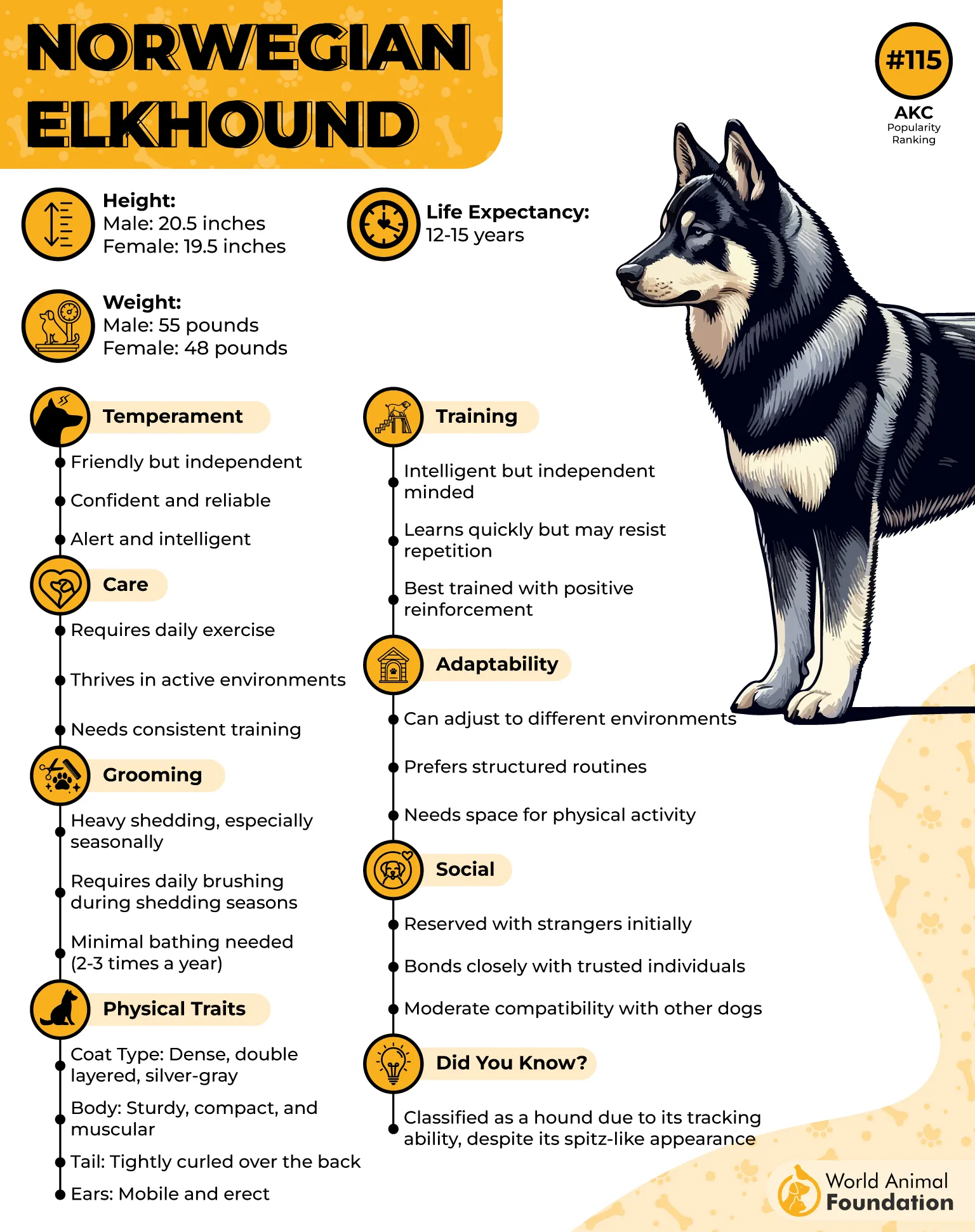
But the Elkhound isn’t all about chasing big game. These dogs were also trusted protectors and herders on remote Norwegian farms, wearing many hats (or should we say “collars”) to keep livestock safe and sound.
With their wolf-like looks, strong build, and a personality that’s equal parts brave and affectionate, Norwegian Elkhounds are the perfect mix of fierce guardian and loving family member. These dogs are known for their bold and energetic temperament. Independent by nature, they’re confident and capable of looking after themselves—and sometimes they’ll try to look after you, too!
As per WebMD, Norwegian Elkhounds are excellent swimmers and can really shine in herding or agility competitions. To keep their sharp minds engaged, it’s important to provide them with plenty of mental stimulation through games, challenges, or simply exploring new scents and environments.
They’re smart, loyal, and definitely ready for an adventure — whether it’s a hike through the woods or just guarding your home from the mailman.
3. Greenland Dog
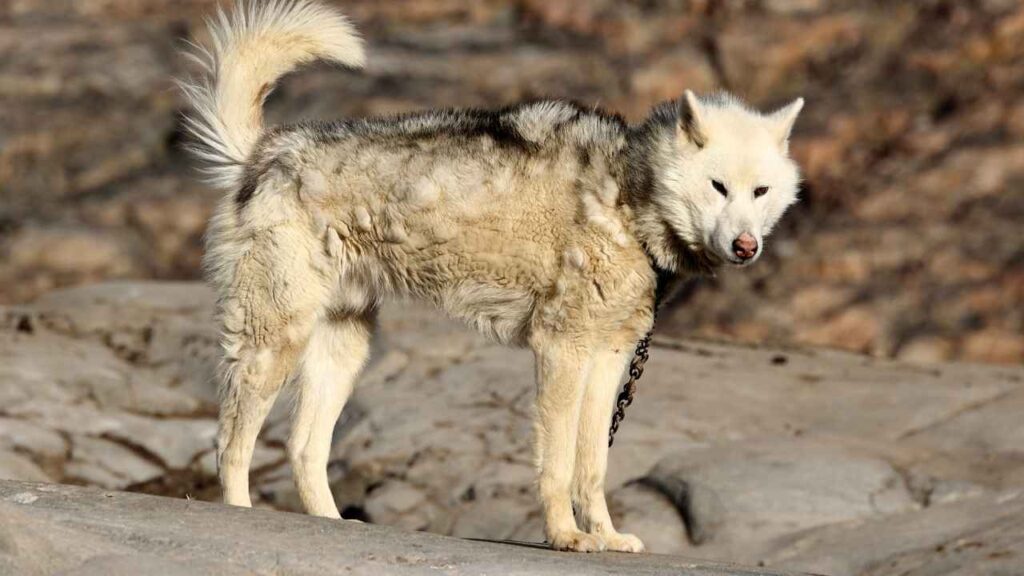
When you think of a dog that can handle bone-chilling Arctic adventures and look majestic doing it, the Greenland Dog is your go-to.
These husky-like pups have been pulling sleds, herding, and surviving some of the harshest climates on Earth for centuries. If the North Pole had a VIP canine guest list, the Greenland Dog would be right at the top.
The Greenland Dog is a strong, rugged breed built for endurance and power. With a broad, wedge-shaped head, slightly slanted eyes, and small, thick-furred triangular ears designed to resist frostbite, this dog is clearly made for the Arctic.
Its muscular, short-coated legs are built for strength, and its tail typically curls over the back in classic sled-dog style. Built tough, with thick fur and endless stamina, they’re basically the marathon runners of the dog world — only with paws instead of sneakers.
As per Wikipedia, like many sled dogs, Greenland Dogs are well adapted to challenging terrain, moving with speed and confidence even in harsh conditions. Known for their impressive stamina and fearless spirit, they’re prized as hard-working, determined dogs that thrive in demanding environments.
But don’t be fooled by their serious, stoic look; Greenland Dogs are known for being loyal, friendly, and surprisingly playful when off duty. So, whether you want a canine winter warrior or a cuddly companion who’s mastered the cold, the Greenland Dog has you covered.
4. Swedish Vallhund

Recognized by the Swedish Kennel Club in 1943 and by the American Kennel Club much later in 2007, the Swedish Vallhund is a spirited and lively breed with deep roots in Scandinavian history.
Short legs, a long body, and a tail that’s often missing (thanks to their natural bobtail gene) — the Swedish Vallhund looks like a Viking-era version of a Corgi, and maybe it is! These clever little herders were bred by the Vikings themselves, tasked with keeping cattle in line while showing off some serious personality.
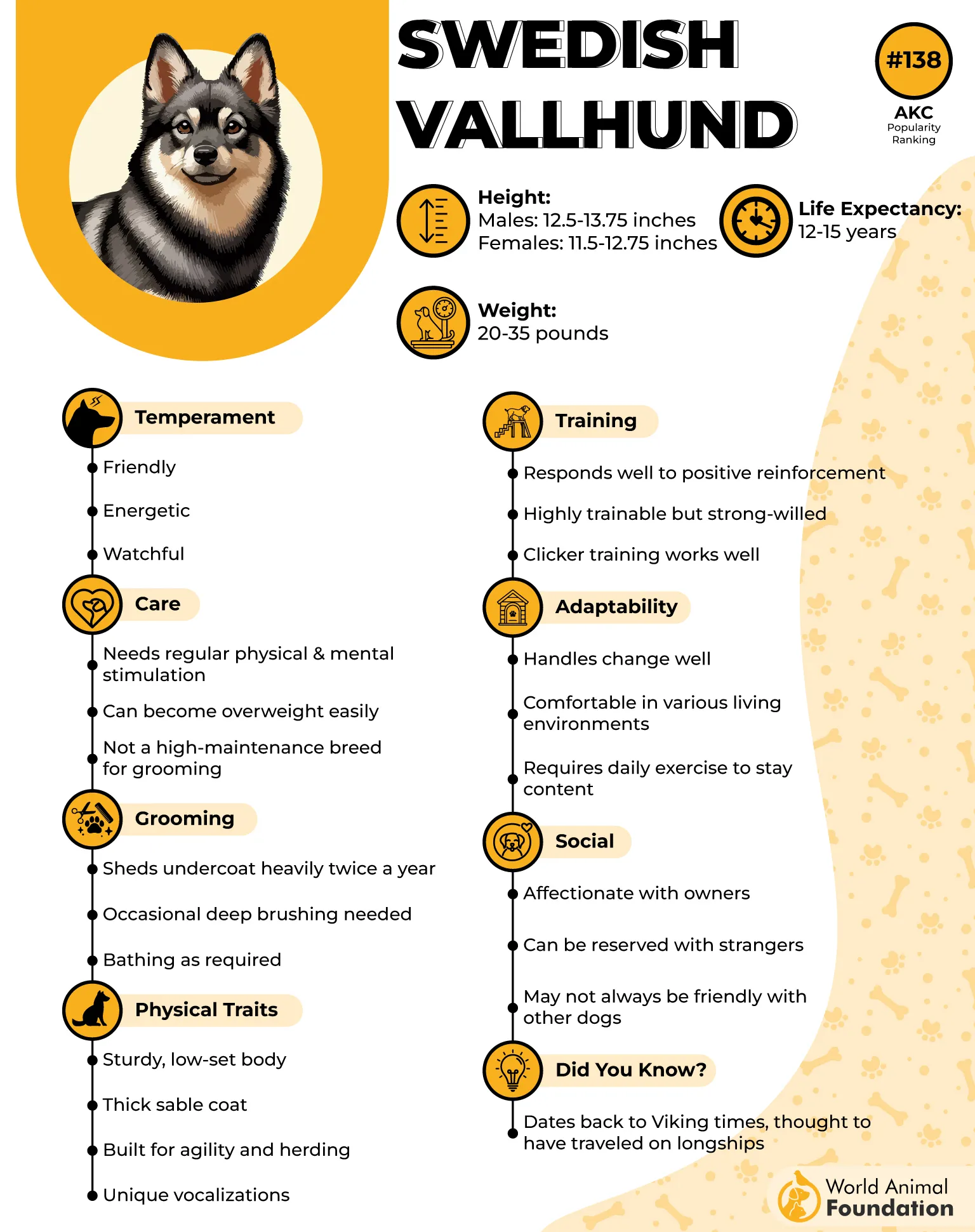
Is the Swedish Vallhund related to the Welsh Corgi? The dog world isn’t quite sure — it’s like the ultimate doggie family mystery. But one thing’s for sure: they both share that charming mix of energy, smarts, and a hint of mischief.
Don’t let their size fool you; these dogs have big-dog attitudes packed into compact frames. They’re energetic, affectionate, and always up for a herding challenge—or a good belly rub after a hard day’s work.
Swedish Vallhunds thrive on activity and mental stimulation—without it, they can easily get bored and turn to mischief. Affectionate and clever, they bond closely with their families and do especially well in active households where they have plenty to do, learn, and explore.
5. Icelandic Sheepdog
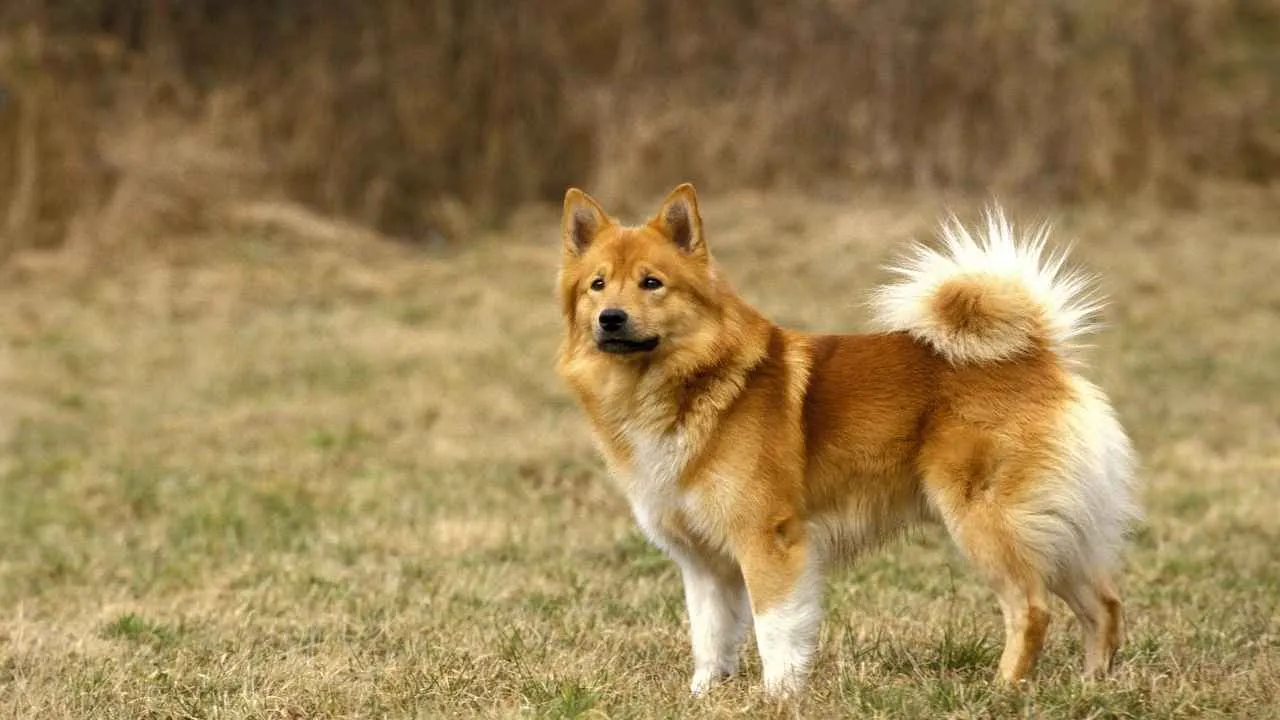
If you think Vikings just raided and sailed, think again — they also brought some serious doggie swag to Iceland!
The Icelandic Sheepdog is the island’s one-and-only native breed, a fluffy bundle of joy descended from those hardy Viking pups who crossed the seas centuries ago. This dog is basically the OG Icelandic shepherd, built to herd sheep across volcanic landscapes and sweeping tundras without breaking a sweat.
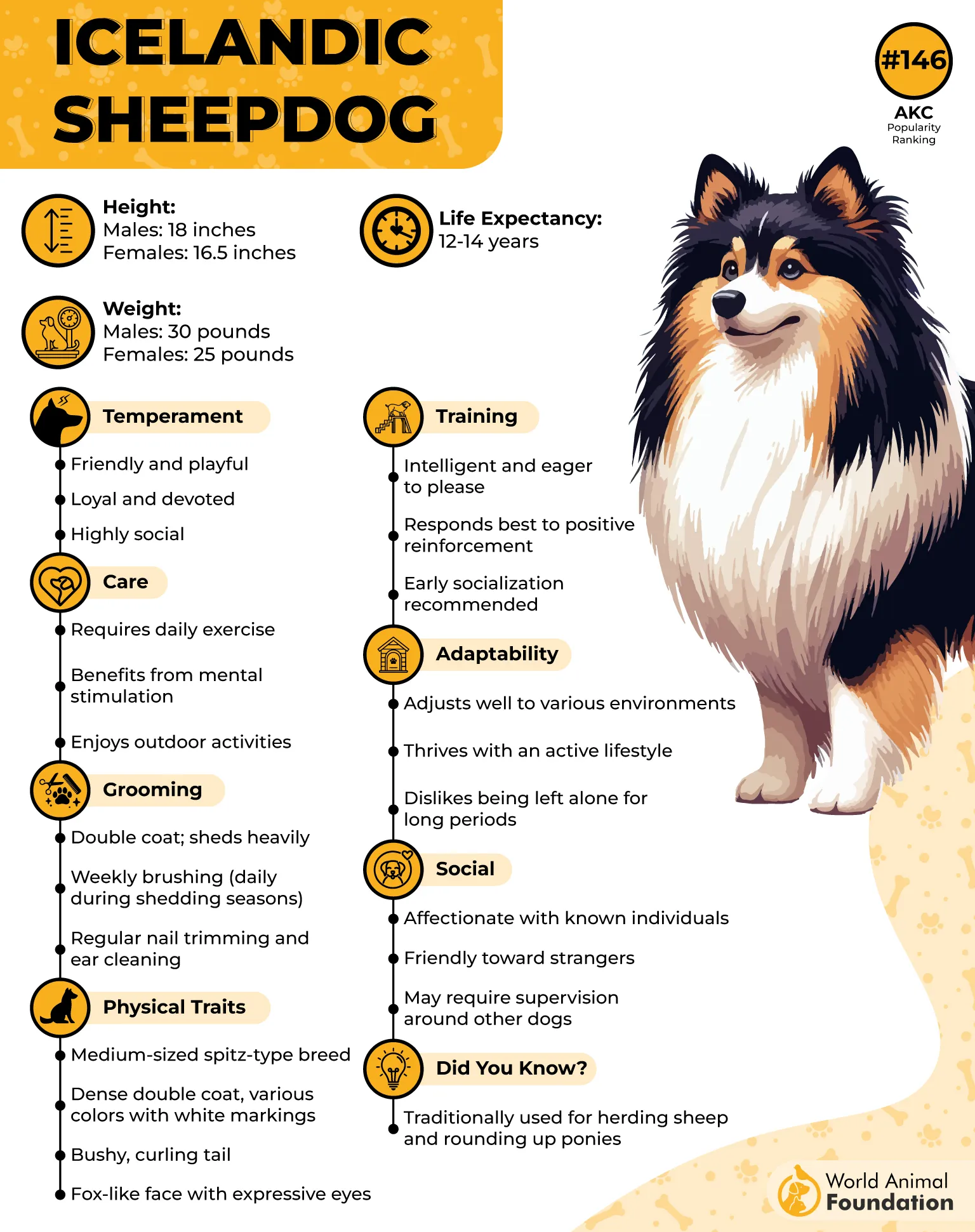
With their wagging tails, perky ears, and ever-ready smile, Icelandic Sheepdogs are like the ultimate cheerleaders of the dog world — always ready to motivate, herd, and cuddle.
These pups thrive on being active and social, which means they’re perfect for families who love adventure and a good laugh.
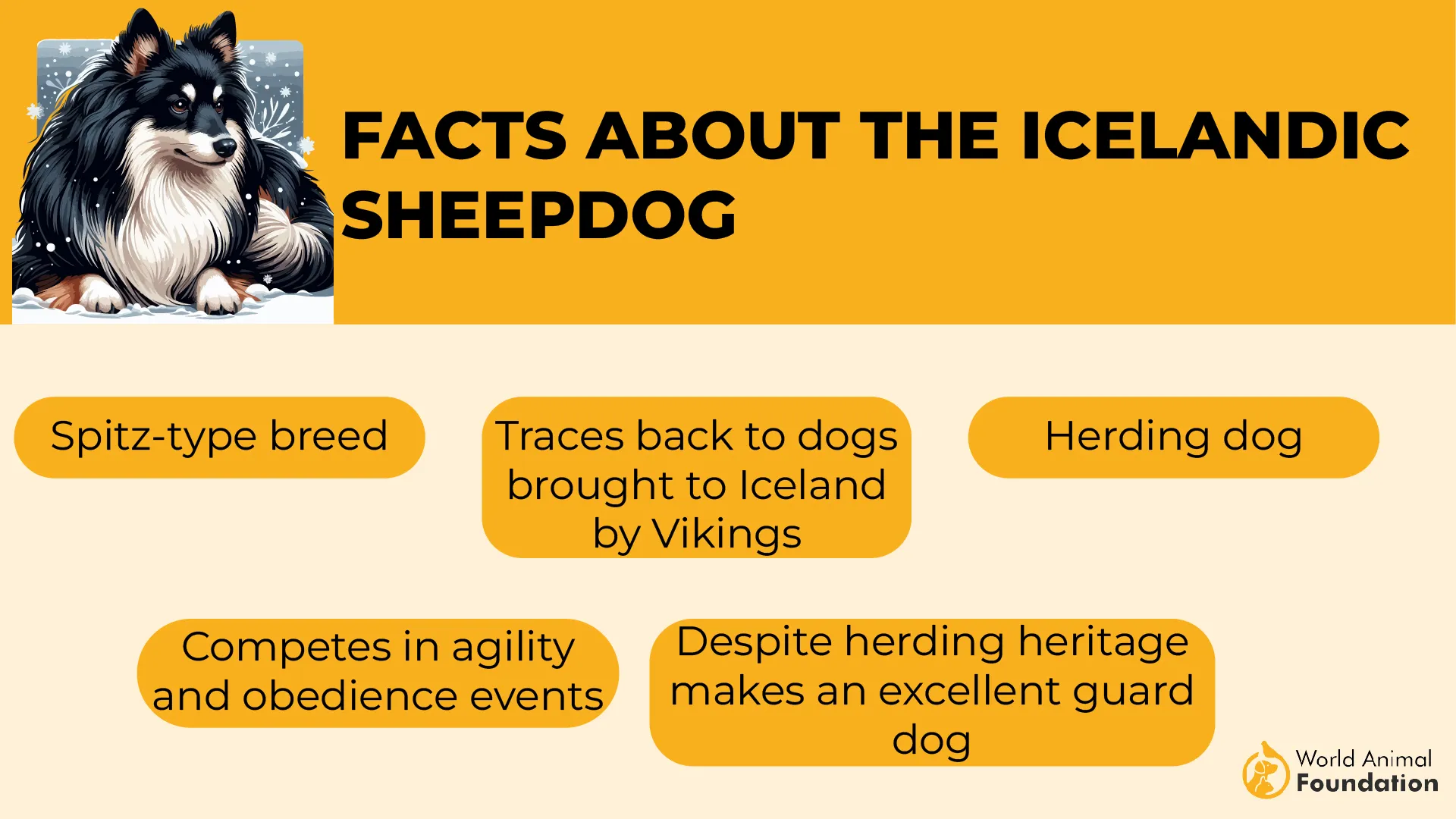
Fun fact: their joyful “yip-yip” bark sounds almost like laughter, making it impossible not to smile back. If you’re dreaming of a dog that’s got history, heart, and a little Viking spirit to boot, the Icelandic Sheepdog has your name written all over its fluffy coat.
6. Karelian Bear Dog
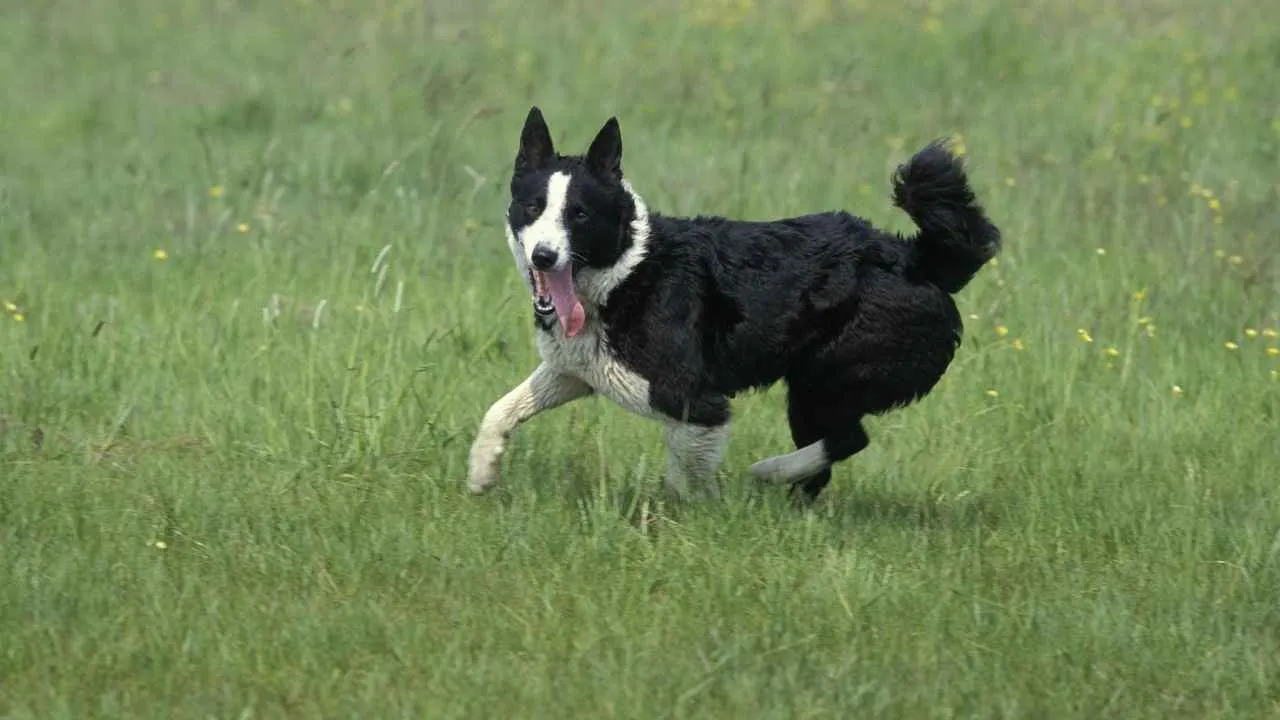
Imagine a dog that’s got the guts to face down bears — and win some respect while doing it. Meet the Karelian Bear Dog, Finland’s ancient warrior breed famous for big game hunting like bears and wild boar.
While they’re rare in the U.S., Karelian dogs have earned their stripes working with wildlife agencies in national parks, helping reduce tense standoffs between humans and bears. Think of them as the original bear whisperers, calming conflicts with a bark, a growl, and serious courage.
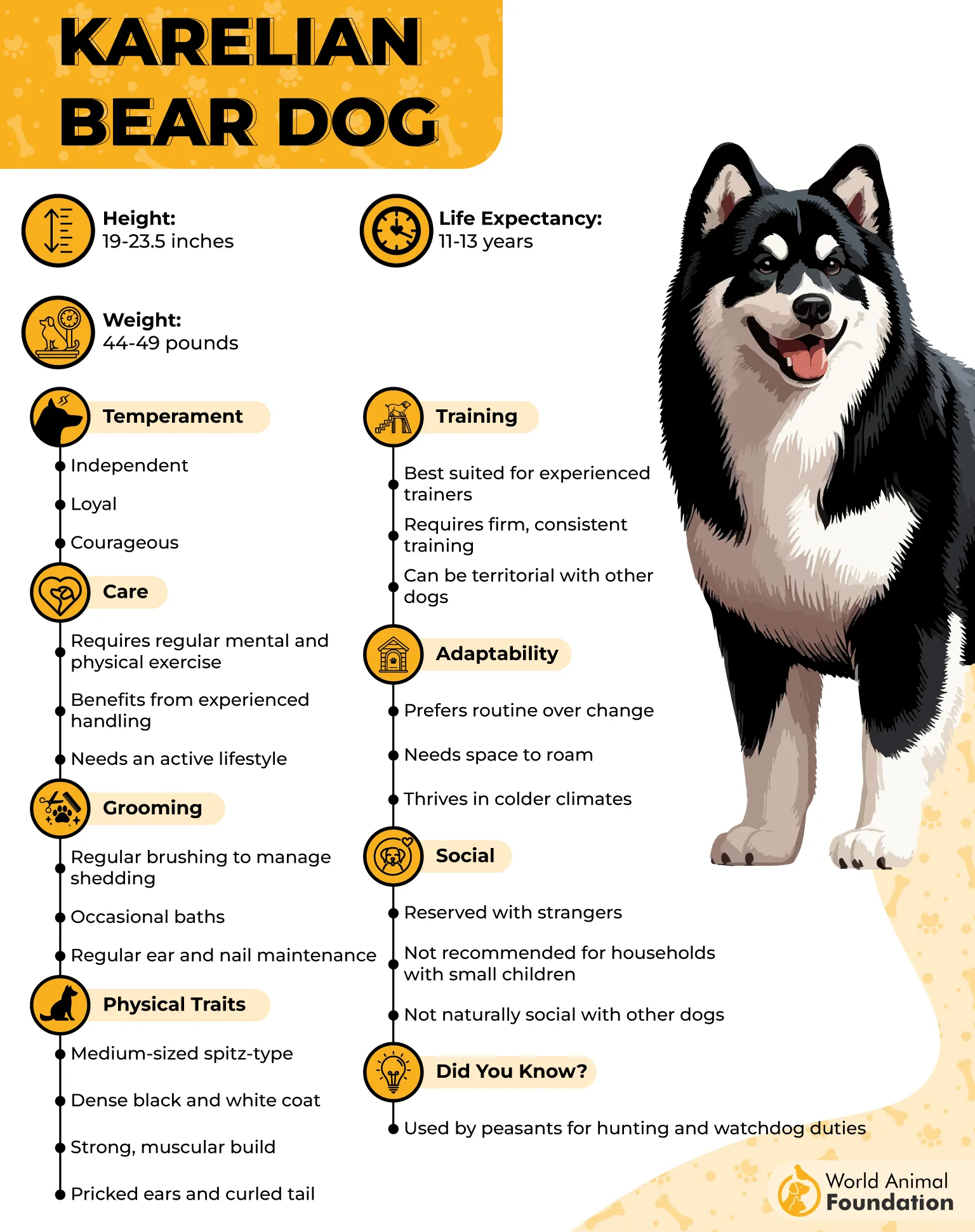
This medium-sized hunting dog stands between 19 to 23.5 inches tall at the shoulder and typically weighs between 44 to 49 pounds.
Known for their striking black-and-white dense undercoat, they also feature erect ears and a bushy tail that curls neatly over their back—a classic trait of many spitz-type breeds. Their sturdy build and sharp senses make them excellent hunting companions in rugged terrain and harsh, cold climates.
These dogs aren’t just tough; they’re smart, brave, and fiercely loyal— basically the ultimate forest bodyguards. With a long history as skilled hunting dogs, Karelian Bear Dogs have a strong, independent working spirit and aren’t typically considered ideal family pets.
Their natural wariness means they’ll often bark at anything unfamiliar—whether it’s a stranger or a wild animal. While fiercely loyal and brave, their stubborn streak and highly intelligent nature can make training a challenge, especially for first-time dog owners, PetMD noted.
They do best with experienced handlers who understand their driven, no-nonsense nature. The Karelian Bear Dog is built for stamina, smarts, and a bit of wild-hearted fun.
7. Norwegian Lundehund

Imagine a dog so quirky and specialized, it looks like nature took a creative detour just to make it. Meet the Norwegian Lundehund — a rare Nordic marvel straight from the rugged islands off Norway’s coast. Now, if you’re wondering what “Lundehund” means, you’re in luck: it literally translates to “Puffin Dog”.
Yep, these pups were basically the original birdwatchers — but with a twist. Their mission? Hunting puffins and their eggs from the cliffs and caves where humans couldn’t reach without risking a tumble. Talk about a daredevil dog job!
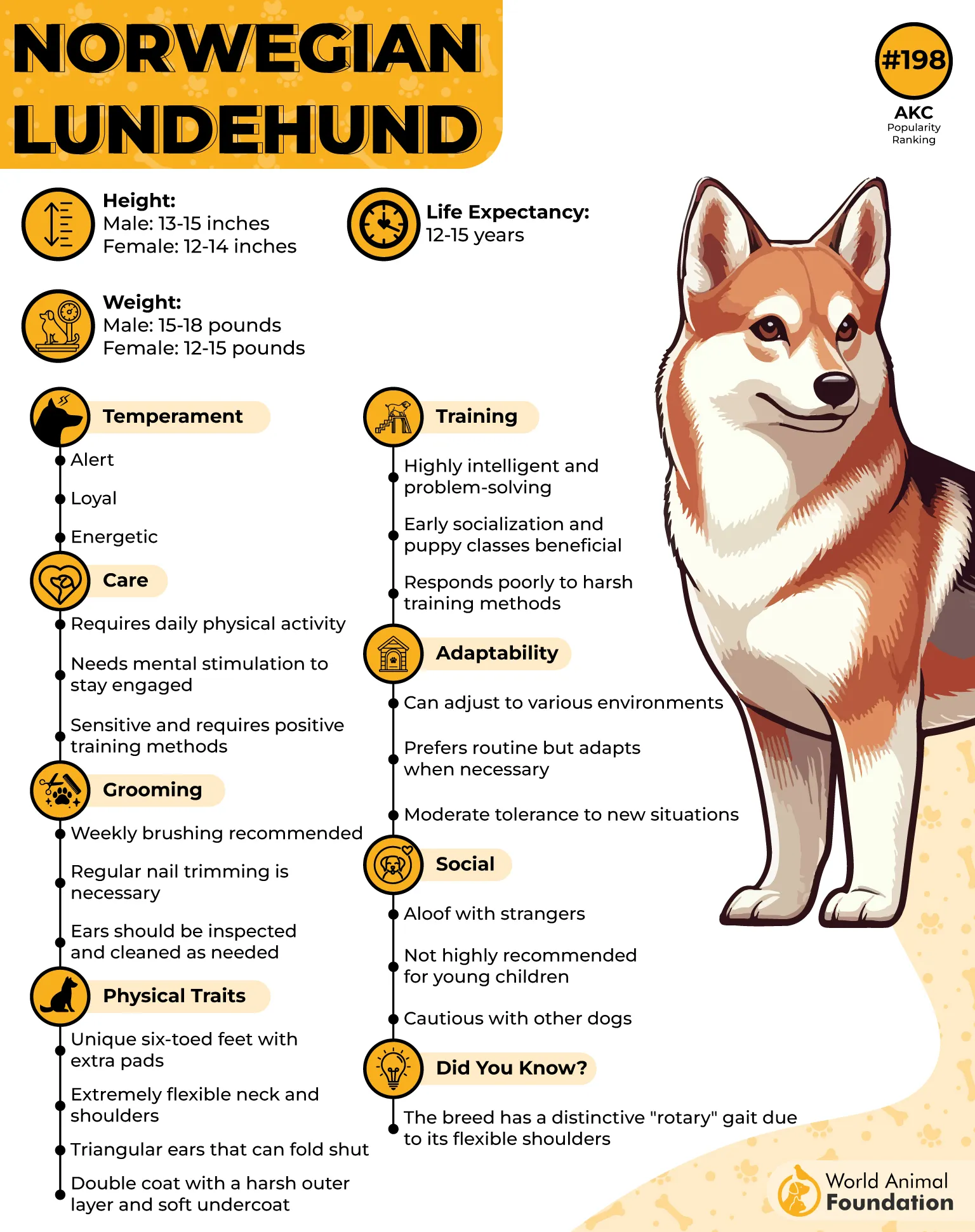
What makes the Lundehund extra fascinating (and a little bit bonkers in the best way) is its unique anatomy. This dog was basically built by a committee of genius inventors. It has six toes on each paw — that’s right, SIX — which help it grip slippery rocks like a furry mountain goat.
Plus, their joints are so flexible that they can practically fold themselves like a doggy origami masterpiece. Ever see a dog bend its head backward to clean its ears? The Lundehund can do it, no problem. If this dog had a superhero name, it would be “The Flexible Fjord Hopper.”
Despite all these cool traits, the Lundehund is pretty rare today, making it a true hidden gem of the Nordic dog world. They’re affectionate and loyal, perfect for families who want a pooch that’s as interesting in personality as it is in paws. Just don’t expect them to fetch your slippers—chasing puffins is way more their style.
So next time you’re craving a dog with a bit of Nordic mystery, a splash of eccentric charm, and a whole lot of “what on earth?!” — the Norwegian Lundehund might just be your new best friend. And hey, if you ever visit Norway, maybe you’ll spot one of these puffin-pros in action, flexing those six toes like a true cliffside ninja!
Conclusion
Dog breeds common in Nordic countries—like the Finnish Lapphund, Norwegian Buhund, and Finnish Spitz—are known for their herding instincts, problem-solving skills, and loyalty. These dogs, once used for hunting or by Viking settlers, are now great companions for pet parents who value intelligence and strong bonds.
While some may become couch potatoes without proper socialization, they’re often highly trainable and shine in obedience competitions. With early training, regular brushing, and enough exercise, these puppies grow into well-rounded dogs. Though not the most popular breeds globally, they’re suitable for any owner seeking a smart, active hound with deep roots in other Nordic countries.


